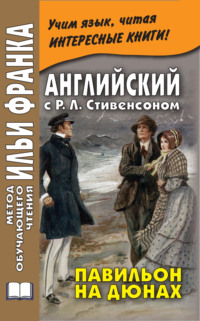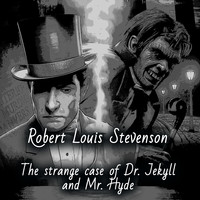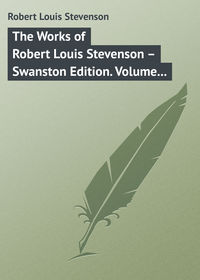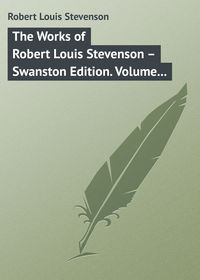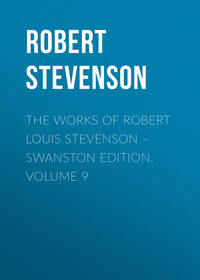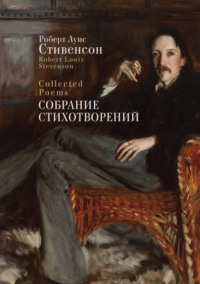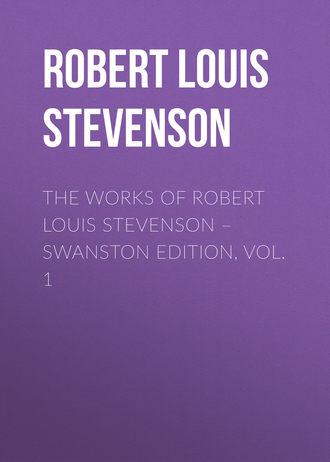 полная версия
полная версияThe Works of Robert Louis Stevenson – Swanston Edition, Volume 1
CHAPTER IV
LEGENDS
The character of a place is often most perfectly expressed in its associations. An event strikes root and grows into a legend, when it has happened amongst congenial surroundings. Ugly actions, above all in ugly places, have the true romantic quality, and become an undying property of their scene. To a man like Scott, the different appearances of nature seemed each to contain its own legend ready made, which it was his to call forth: in such or such a place, only such or such events ought with propriety to happen; and in this spirit he made the "Lady of the Lake" for Ben Venue, the "Heart of Midlothian" for Edinburgh, and the "Pirate," so indifferently written but so romantically conceived, for the desolate islands and roaring tideways of the North. The common run of mankind have, from generation to generation, an instinct almost as delicate as that of Scott; but where he created new things, they only forget what is unsuitable among the old; and by survival of the fittest, a body of tradition becomes a work of art. So, in the low dens and high-flying garrets of Edinburgh, people may go back upon dark passages in the town's adventures, and chill their marrow with winter's tales about the fire: tales that are singularly apposite and characteristic, not only of the old life, but of the very constitution of built nature in that part, and singularly well qualified to add horror to horror, when the wind pipes around the tall lands, and hoots adown arched passages, and the far-spread wilderness of city lamps keeps quavering and flaring in the gusts.
Here, it is the tale of Begbie the bank-porter, stricken to the heart at a blow and left in his blood within a step or two of the crowded High Street. There, people hush their voices over Burke and Hare; over drugs and violated graves, and the resurrection-men smothering their victims with their knees. Here, again, the fame of Deacon Brodie is kept piously fresh. A great man in his day was the Deacon; well seen in good society, crafty with his hands as a cabinet-maker, and one who could sing a song with taste. Many a citizen was proud to welcome the Deacon to supper, and dismissed him with regret at a timeous hour, who would have been vastly disconcerted had he known how soon, and in what guise, his visitor returned. Many stories are told of this redoubtable Edinburgh burglar, but the one I have in my mind most vividly gives the key of all the rest. A friend of Brodie's, nested some way towards heaven in one of these great lands, had told him of a projected visit to the country, and afterwards, detained by some affairs, put it off and stayed the night in town. The good man had lain some time awake; it was far on in the small hours by the Tron bell; when suddenly there came a creak, a jar, a faint light. Softly he clambered out of bed and up to a false window which looked upon another room, and there, by the glimmer of a thieves' lantern, was his good friend the Deacon in a mask. It is characteristic of the town and the town's manners that this little episode should have been quietly tided over, and quite a good time elapsed before a great robbery, an escape, a Bow Street runner, a cock-fight, an apprehension in a cupboard in Amsterdam, and a last step into the air off his own greatly improved gallows drop, brought the career of Deacon William Brodie to an end. But still, by the mind's eye, he may be seen, a man harassed below a mountain of duplicity, slinking from a magistrate's supper-room to a thieves' ken, and pickeering among the closes by the flicker of a dark lamp.
Or where the Deacon is out of favour, perhaps some memory lingers of the great plagues, and of fatal houses still unsafe to enter within the memory of man. For in time of pestilence the discipline had been sharp and sudden, and what we now call "stamping out contagion" was carried on with deadly rigour. The officials, in their gowns of grey, with a white St. Andrew's cross on back and breast, and white cloth carried before them on a staff, perambulated the city, adding the terror of man's justice to the fear of God's visitation. The dead they buried on the Borough Muir; the living who had concealed the sickness were drowned, if they were women, in the Quarry Holes, and if they were men, were hanged and gibbeted at their own doors; and wherever the evil had passed, furniture was destroyed and houses closed. And the most bogeyish part of the story is about such houses. Two generations back they still stood dark and empty; people avoided them as they passed by; the boldest schoolboy only shouted through the key-hole and made off; for within, it was supposed, the plague lay ambushed like a basilisk, ready to flow forth and spread blain and pustule through the city. What a terrible next-door neighbour for superstitious citizens! A rat scampering within would send a shudder through the stoutest heart. Here, if you like, was a sanitary parable, addressed by our uncleanly forefathers to their own neglect.
And then we have Major Weir; for although even his house is now demolished, old Edinburgh cannot clear herself of his unholy memory. He and his sister lived together in an odour of sour piety. She was a marvelous spinster; he had a rare gift of supplication, and was known among devout admirers by the name of Angelical Thomas. "He was a tall, black man, and ordinarily looked down to the ground; a grim countenance, and a big nose. His garb was still a cloak, and somewhat dark, and he never went without his staff." How it came about that Angelical Thomas was burned in company with his staff, and his sister in gentler manner hanged, and whether these two were simply religious maniacs of the more furious order, or had real as well as imaginary sins upon their old-world shoulders, are points happily beyond the reach of our intention. At least, it is suitable enough that out of this superstitious city some such example should have been put forth: the outcome and fine flower of dark and vehement religion. And at least the facts struck the public fancy and brought forth a remarkable family of myths. It would appear that the Major's staff went upon his errands, and even ran before him with a lantern on dark nights. Gigantic females, "stentoriously laughing and gaping with tehees of laughter" at unseasonable hours of night and morning, haunted the purlieus of his abode. His house fell under such a load of infamy that no one dared to sleep in it, until municipal improvement leveled the structure with the ground. And my father has often been told in the nursery how the devil's coach, drawn by six coal-black horses with fiery eyes, would drive at night into the West Bow, and belated people might see the dead Major through the glasses.
Another legend is that of the two maiden sisters. A legend I am afraid it may be, in the most discreditable meaning of the term; or perhaps something worse—a mere yesterday's fiction. But it is a story of some vitality, and is worthy of a place in the Edinburgh kalendar. This pair inhabited a single room; from the facts, it must have been double-bedded; and it may have been of some dimensions; but when all is said, it was a single room. Here our two spinsters fell out—on some point of controversial divinity belike: but fell out so bitterly that there was never a word spoken between them, black or white, from that day forward. You would have thought they would separate: but no; whether from lack of means, or the Scottish fear of scandal, they continued to keep house together where they were. A chalk line drawn upon the floor separated their two domains; it bisected the doorway and the fireplace, so that each could go out and in, and do her cooking, without violating the territory of the other. So, for years, they co-existed in a hateful silence; their meals, their ablutions, their friendly visitors, exposed to an unfriendly scrutiny; and at night, in the dark watches, each could hear the breathing of her enemy. Never did four walls look down upon an uglier spectacle than these sisters rivaling in unsisterliness. Here is a canvas for Hawthorne to have turned into a cabinet picture—he had a Puritanic vein, which would have fitted him to treat this Puritanic horror; he could have shown them to us in their sicknesses and at their hideous twin devotions, thumbing a pair of great Bibles, or praying aloud for each other's penitence with marrowy emphasis; now each, with kilted petticoat, at her own corner of the fire on some tempestuous evening; now sitting each at her window, looking out upon the summer landscape sloping far below them towards the firth, and the field-paths where they had wandered hand in hand; or, as age and infirmity grew upon them and prolonged their toilettes, and their hands began to tremble and their heads to nod involuntarily, growing only the more steeled in enmity with years; until one fine day, at a word, a look, a visit, or the approach of death, their hearts would melt and the chalk boundary be overstepped for ever.
Alas! to those who know the ecclesiastical history of the race—the most perverse and melancholy in man's annals—this will seem only a figure of much that is typical of Scotland and her high-seated capital above the Forth—a figure so grimly realistic that it may pass with strangers for a caricature. We are wonderful patient haters for conscience' sake up here in the North. I spoke, in the first of these papers, of the Parliaments of the Established and Free Churches, and how they can hear each other singing psalms across the street. There is but a street between them in space, but a shadow between them in principle; and yet there they sit, enchanted, and in damnatory accents pray for each other's growth in grace. It would be well if there were no more than two; but the sects in Scotland form a large family of sisters, and the chalk lines are thickly drawn, and run through the midst of many private homes. Edinburgh is a city of churches, as though it were a place of pilgrimage. You will see four within a stone-cast at the head of the West Bow. Some are crowded to the doors; some are empty like monuments; and yet you will ever find new ones in the building. Hence that surprising clamour of church bells that suddenly breaks out upon the Sabbath morning, from Trinity and the sea-skirts to Morningside on the borders of the hills. I have heard the chimes of Oxford playing their symphony in a golden autumn morning, and beautiful it was to hear. But in Edinburgh all manner of loud bells join, or rather disjoin, in one swelling, brutal babblement of noise. Now one overtakes another, and now lags behind it; now five or six all strike on the pained tympanum at the same punctual instant of time, and make together a dismal chord of discord; and now for a second all seem to have conspired to hold their peace. Indeed, there are not many uproars in this world more dismal than that of the Sabbath bells in Edinburgh: a harsh ecclesiastical tocsin; the outcry of incongruous orthodoxies, calling on every separate conventicler to put up a protest, each in his own synagogue, against "right-hand extremes and left-hand defections." And surely there are few worse extremes than this extremity of zeal; and few more deplorable defections than this disloyalty to Christian love. Shakespeare wrote a comedy of "Much Ado about Nothing." The Scottish nation made a fantastic tragedy on the same subject. And it is for the success of this remarkable piece that these bells are sounded every Sabbath morning on the hills above the Forth. How many of them might rest silent in the steeple, how many of these ugly churches might be demolished and turned once more into useful building material, if people who think almost exactly the same thoughts about religion would condescend to worship God under the same roof! But there are the chalk lines. And which is to pocket pride, and speak the foremost word?
CHAPTER V
GREYFRIARS
It was Queen Mary who threw open the gardens of the Grey Friars: a new and semi-rural cemetery in those days, although it has grown an antiquity in its turn and been superseded by half-a-dozen others. The Friars must have had a pleasant time on summer evenings; for their gardens were situated to a wish, with the tall Castle and the tallest of the Castle crags in front. Even now, it is one of our famous Edinburgh points of view; and strangers are led thither to see, by yet another instance, how strangely the city lies upon her hills. The enclosure is of an irregular shape; the double church of Old and New Greyfriars stands on the level at the top; a few thorns are dotted here and there, and the ground falls by terrace and steep slope towards the north. The open shows many slabs and table tombstones; and all round the margin, the place is girt by an array of aristocratic mausoleums appallingly adorned. Setting aside the tombs of Roubilliac, which belong to the heroic order of graveyard art, we Scotch stand, to my fancy, highest among nations in the matter of grimly illustrating death. We seem to love for their own sake the emblems of time and the great change; and even around country churches you will find a wonderful exhibition of skulls, and crossbones, and noseless angels, and trumpets pealing for the Judgment Day. Every mason was a pedestrian Holbein: he had a deep consciousness of death, and loved to put its terrors pithily before the churchyard loiterer; he was brimful of rough hints upon mortality, and any dead farmer was seized upon to be a text. The classical examples of this art are in Greyfriars. In their time, these were doubtless costly monuments, and reckoned of a very elegant proportion by contemporaries; and now, when the elegance is not so apparent, the significance remains. You may perhaps look with a smile on the profusion of Latin mottoes—some crawling endwise up the shaft of a pillar, some issuing on a scroll from angels' trumpets—on the emblematic horrors, the figures rising headless from the grave, and all the traditional ingenuities in which it pleased our fathers to set forth their sorrow for the dead and their sense of earthly mutability. But it is not a hearty sort of mirth. Each ornament may have been executed by the merriest apprentice, whistling as he plied the mallet; but the original meaning of each, and the combined effect of so many of them in this quiet enclosure, is serious to the point of melancholy.
Round a great part of the circuit, houses of a low class present their backs to the churchyard. Only a few inches separate the living from the dead. Here, a window is partly blocked up by the pediment of a tomb; there, where the street falls far below the level of the graves, a chimney has been trained up the back of a monument, and a red pot looks vulgarly over from behind. A damp smell of the graveyard finds its way into houses where workmen sit at meat. Domestic life on a small scale goes forward visibly at the windows. The very solitude and stillness of the enclosure, which lies apart from the town's traffic, serves to accentuate the contrast. As you walk upon the graves, you see children scattering crumbs to feed the sparrows; you hear people singing or washing dishes, or the sound of tears and castigation; the linen on a clothes-pole flaps against funereal sculpture; or perhaps the cat slips over the lintel and descends on a memorial urn. And as there is nothing else astir, these incongruous sights and noises take hold on the attention and exaggerate the sadness of the place.
Greyfriars is continually overrun by cats. I have seen one afternoon, as many as thirteen of them seated on the grass beside old Milne, the Master Builder, all sleek and fat, and complacently blinking, as if they had fed upon strange meats. Old Milne was chanting with the saints, as we may hope, and cared little for the company about his grave; but I confess the spectacle had an ugly side for me; and I was glad to step forward and raise my eyes to where the Castle and the roofs of the Old Town, and the spire of the Assembly Hall, stood deployed against the sky with the colourless precision of engraving. An open outlook is to be desired from a churchyard, and a sight of the sky and some of the world's beauty relieves a mind from morbid thoughts.
I shall never forget one visit. It was a grey, dropping day; the grass was strung with rain-drops; and the people in the houses kept hanging out their shirts and petticoats and angrily taking them in again, as the weather turned from wet to fair and back again. A gravedigger, and a friend of his, a gardener from the country, accompanied me into one after another of the cells and little courtyards in which it gratified the wealthy of old days to enclose their old bones from neighbourhood. In one, under a sort of shrine, we found a forlorn human effigy, very realistically executed down to the detail of his ribbed stockings, and holding in his hand a ticket with the date of his demise. He looked most pitiful and ridiculous, shut up by himself in his aristocratic precinct, like a bad old boy or an inferior forgotten deity under a new dispensation; the burdocks grew familiarly about his feet, the rain dripped all round him; and the world maintained the most entire indifference as to who he was or whither he had gone. In another, a vaulted tomb, handsome externally but horrible inside with damp and cobwebs, there were three mounds of black earth and an uncovered thigh-bone. This was the place of interment, it appeared, of a family with whom the gardener had been long in service. He was among old acquaintances. "This'll be Miss Marg'et's," said he, giving the bone a friendly kick. "The auld – !" I have always an uncomfortable feeling in a graveyard, at sight of so many tombs to perpetuate memories best forgotten; but I never had the impression so strongly as that day. People had been at some expense in both these cases: to provoke a melancholy feeling of derision in the one, and an insulting epithet in the other. The proper inscription for the most part of mankind, I began to think, is the cynical jeer, cras tibi. That, if anything, will stop the mouth of a carper; since it both admits the worst and carries the war triumphantly into the enemy's camp.
Greyfriars is a place of many associations. There was one window in a house at the lower end, now demolished, which was pointed out to me by the gravedigger as a spot of legendary interest. Burke, the resurrection-man, infamous for so many murders at five shillings a head, used to sit thereat, with pipe and nightcap, to watch burials going forward on the green. In a tomb higher up, which must then have been but newly finished, John Knox, according to the same informant, had taken refuge in a turmoil of the Reformation. Behind the church is the haunted mausoleum of Sir George Mackenzie: Bloody Mackenzie, Lord Advocate in the Covenanting troubles and author of some pleasing sentiments on toleration. Here, in the last century, an old Heriot's Hospital boy once harboured from the pursuit of the police. The Hospital is next door to Greyfriars—a courtly building among lawns, where, on Founder's Day, you may see a multitude of children playing Kiss-in-the-Ring and Round the Mulberry-bush. Thus, when the fugitive had managed to conceal himself in the tomb, his old schoolmates had a hundred opportunities to bring him food; and there he lay in safety till a ship was found to smuggle him abroad. But his must have been indeed a heart of brass, to lie all day and night alone with the dead persecutor; and other lads were far from emulating him in courage. When a man's soul is certainly in hell, his body will scarce lie quiet in a tomb, however costly; some time or other the door must open, and the reprobate come forth in the abhorred garments of the grave. It was thought a high piece of prowess to knock at the Lord Advocate's mausoleum and challenge him to appear. "Bluidy Mackenzie, come oot if ye daur!" sang the foolhardy urchins. But Sir George had other affairs on hand; and the author of an essay on toleration continues to sleep peacefully among the many whom he so intolerantly helped to slay.
For this infelix campus, as it is dubbed in one of its own inscriptions—an inscription over which Dr. Johnson passed a critical eye—is in many ways sacred to the memory of the men whom Mackenzie persecuted. It was here, on the flat tombstones, that the Covenant was signed by an enthusiastic people. In the long arm of the churchyard that extends to Lauriston, the prisoners from Bothwell Bridge—fed on bread and water, and guarded, life for life, by vigilant marksmen—lay five months looking for the scaffold or the plantations. And while the good work was going forward in the Grassmarket, idlers in Greyfriars might have heard the throb of the military drums that drowned the voices of the martyrs. Nor is this all: for down in the corner farthest from Sir George, there stands a monument, dedicated, in uncouth Covenanting verse, to all who lost their lives in that contention. There is no moorsman shot in a snow shower beside Irongray or Co'monell; there is not one of the two hundred who were drowned off the Orkneys; nor so much as a poor, over-driven, Covenanting slave in the American plantations; but can lay claim to a share in that memorial, and, if such things interest just men among the shades, can boast he has a monument on earth as well as Julius Caesar or the Pharaohs. Where they may all lie, I know not. Far-scattered bones, indeed! But if the reader cares to learn how some of them—or some part of some of them—found their way at length to such honourable sepulture, let him listen to the words of one who was their comrade in life and their apologist when they were dead. Some of the insane controversial matter I omit, as well as some digressions, but leave the rest in Patrick Walker's language and orthography:—
"The never to be forgotten Mr. James Renwlck told me, that he was Witness to their Public Murder at the Gallowlee, between Leith and Edinburgh, when he saw the Hangman hash and hagg off all their Five heads, with Patrick Foreman's Right Hand: Their Bodies were all buried at the Gallows Foot: their Heads, with Patrick's Hand, were brought and put upon five Pikes on the Pleasaunce-Port.... Mr. Renwick told me that it was the first public Action that his Hand was at, to conveen Friends, and lift their murthered Bodies, and carried them to the West Churchyard of Edinburgh,"—not Greyfriars, this time,—"and buried them there. Then they came about the City … and took down these Five Heads and that Hand; and Day being come, they went quickly up the Pleasaunce; and when they came to Lauristoun Yards, upon the South-side of the City, they durst not venture, being so light, to go and bury their Heads with their Bodies, which they designed; it being present death, if any of them had been found. Alexander Tweedie, a Friend, being with them, who at that Time was Gardner in these Yards, concluded to bury them in his Yard, being in a Box (wrapped in Linen), where they lay 45 Years except 3 Days, being executed upon the 10th of October 1681, and found the 7th Day of October 1726. That Piece of Ground lay for some years unlaboured; and trenching it, the Gardner found them, which affrighted him; the Box was consumed. Mr. Schaw, the Owner of these Yards, caused lift them, and lay them upon a Table in his Summer-house: Mr. Schaw's mother was so kind, as to cut out a Linen-cloth and cover them. They lay Twelve Days there, where all had Access to see them. Alexander Tweedie, the foresaid Gardner, said, when dying, There was a Treasure hid in his Yard, but neither Gold nor Silver. Daniel Tweedie, his Son, came along with me to that Yard, and told me that his Father planted a white Rose-bush above them, and farther down the Yard a red Rose-bush, which were more fruitful than any other Bush in the Yard.... Many came"—to see the heads—"out of Curiosity; yet I rejoiced to see so many concerned grave Men and Women favouring the Dust of our Martyrs. There were Six of us concluded to bury them upon the Nineteenth Day of October 1726, and every one of us to acquaint Friends of the Day and Hour, being Wednesday, the Day of the Week on which most of them were executed, and at 4 of the Clock at Night, being the Hour that most of them went to their resting Graves. We caused make a compleat Coffin for them in Black, with four Yards of fine Linen, the way that our Martyrs Corps were managed.... Accordingly we kept the aforesaid Day and Hour, and doubled the Linen, and laid the Half of it below them, their nether Jaws being parted from their Heads; but being young Men, their Teeth remained. All were Witness to the Holes in each of their Heads, which the Hangman broke with his Hammer; and according to the Bigness of their Sculls, we laid the Jaws to them, and drew the other Half of the Linen above them, and stufft the Coffin with Shavings. Some prest hard to go thorow the chief Parts of the City as was done at the Revolution; but this we refused, considering that it looked airy and frothy, to make such Show of them, and inconsistent with the solid serious Observing of such an affecting, surprizing unheard-of Dispensation: But took the ordinary Way of other Burials from that Place, to wit, we went east the Back of the Wall, and in at Bristo-Port, and down the Way to the Head of the Cowgate, and turned up to the Churchyard, where they were interred closs to the Martyrs Tomb, with the greatest Multitude of People Old and Young, Men and Women, Ministers and others, that ever I saw together."


